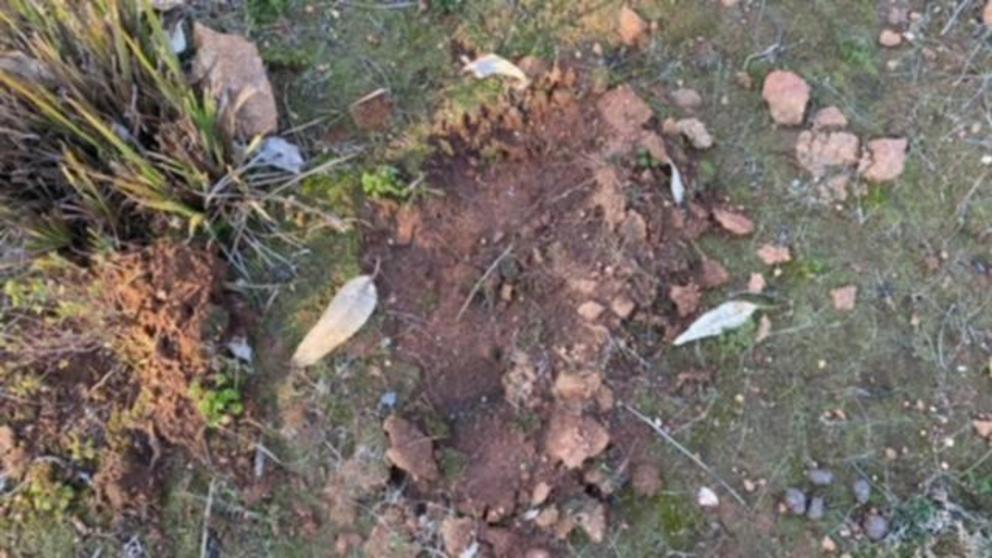Yowie hunter claims he has proof yowies exist in Perth bushland
Every weekend Jason Heal scours bushland around Perth in search of a hairy sub-human cryptid.
Heal is part of a small but growing community of cryptozoologists hunting for Australia’s version of Bigfoot – the legendary yowie.
Born and bred in Subiaco, Mr Heal recently returned to Perth after living in Queensland for the past three decades where he claims he had dozens of hair-raising close encounters with yowie.
Mr Heal and his sidekick Jason Dunn founded the Yowie Research Group in 2012 and have searched large swathes of national parks in Queensland and NSW, amassing a catalogue of audio and video recordings purporting to be of the mysterious yowie.
Now as he ramps up his search in Perth he says there is strong evidence that yowies are living in bushland on our urban fringe.
“I recently saw yowies running at superhuman speeds north of Bullsbrook,” he said.
“I believe there is a population of yowies all around the outer suburbs, including Mundaring, Serpentine Dam and Lake Gnangara.
“I think they go to pockets of bush near people and use bush corridors but because they are moving in early hours of morning and are incredibly quick people never see them.”

Yowie foot print found in Perth Hills Credit: supplied
When asked why there is no body on the slab proof that these hairy beasts exist, Mr Heal said the reason was simple.
“A lot of people think I must be a loony to believe they exist because if they did they would have found the bodies or the bones by now,” he said.
“But yowies are elusive and have the intelligence to stay away from human beings.
“If you look at every culture around the world they all have their own version of yowie, whether it is the yeti, sasquatch; there has to be something to it.
“Australian Indigenous elders know about them for sure. It’s part of their folklore and they have passed down stories of their existence over thousands of years but keep it quiet.”
Mr Heal believes the Neanderthal-like creature has been here for millions of years, longer than Indigenous people.
“They are not homo sapiens, they’re not monkeys or apes, but they have a primate face but are more human-like,” he said.
“They vary in size. You can have small ones the size of a child and bigger ones that grow up to 11 feet which have been seen in the Blue Mountains.
“They will eat anything: berries, plants, kangaroos, snakes, wallabies and road kill.”
And humans too.
“There are a lot of people who go missing in the bush and the cases remain unsolved and it is usually put down to a homicide,” he said.
“But I think some of these are the work of yowies.”

Pictures of Yowie Hunter, Jason Heal, claims he has found evidence Yowies existing in urban fringes in bushland. Pictured in Gnangara, Perth. Photo Ross Swanborough. 070921 Ross Swanborough Credit: Ross Swanborough
Mr Heal believes governments know yowies exist but keep it on the down low because it would be bad for tourism.
“If everyone knew they existed they wouldn’t go camping anymore,” he said.
Mr Heal said the community of yowie hunters and believers is growing in Perth.
“I found interest in cryptozoology back in 2012 after reading an article and I‘ve been hooked ever since,” he said.
“Years ago yowie hunting was an Eastern States thing but more and more people in Perth are interested in the subject.”
Sober-minded scientists like Curtin University associate professor Bill Bateman said while you can’t prove a negative, he highly doubted there is an undiscovered large primate wandering the bush in south west WA.
“There’s no fossil evidence, there’s no reliable biological evidence, that primates – prior to human beings – ever made it to Australasia,” he said.
“I would love to be proved wrong – the discovery of something like a yowie would be immensely exciting, but it is entirely reasonable to take a sceptical, evidence-led approach to claims about unknown animals.
“While I would have no problems with believing in, say, claims of a new species of antelope – the saola is just such an example, discovered in 1992 in Vietnam – I would inevitably be more sceptical about something like a yowie.”
While cryptozoologists are often derided for pseudoscience and fanciful claims, there are animals once considered cryptids by western explorers that turned out to be living, breathing animals.
Gorillas were considered cryptids until 1847, as were the komodo dragon, platypus and giant squid.
Dr Bateman said the motivation behind why people devoted their time to proving beasts like the Loch Ness Monster and Cordering cougar existed was simple.
“Regardless of how sceptical I am, I must admit I find it all really, really compelling and exciting,” he said.
“The idea that you are sharing your habitat with a large, unknown, perhaps dangerous animal can’t help but be exciting.
“In the case of the Cordering cougar there has a been a long tradition of large cats escaping and living wild in Australia, based at least partly in truth – in the 1920s a puma that escaped from a circus survived for a while in Victoria.
“Don’t get me wrong: I would be extremely happy and astounded to discover that things like the yowie and sasquatch are real – but as yet, I just don’t buy it.”
Video can be accessed at source link below

